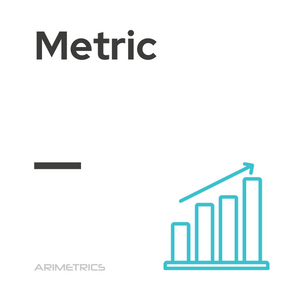 Definition:
Definition:
A metric, in the field of web analytics, is a quantitative value that measures specific aspects of user behavior on a website. Metrics provide numerical data that allow the performance and effectiveness of a website or application to be evaluated. For example, the metric “sessions” indicates the total number of visits to a website during a given period of time. Metrics are presented in the columns of a web analytics report and reflect quantifiable user activity.
Metrics take on deeper meaning when combined with dimensions, as the latter provide the context needed to interpret the data. For example, knowing the number of“sessions” is most useful when associated with a dimension such as“country” or“traffic source“.
Metrics in digital analytics
In digital analytics, metrics quantify user interactions with a website or application, allowing analysts to measure site performance and evaluate the success of marketing and content strategies. Metrics can include data such as number of visits, session duration, bounce rate and conversions. For example, “bounce rate” measures the percentage of visitors who leave the site after viewing a single page.
Examples of metrics
Some of the most common metrics in this field are:
- Sessions or visits: Total number of visits to the website.
- Unique users: Number of individual visitors.
- New users: Users without previous registered visits.
- Recurring visitorsUsers who have already visited the website
- Pages per session: Average number of pages viewed per session.
- Average session duration: Average time users spend on the site.
- Conversion rate: Percentage of users who complete a desired action.
- Bounce rate: Percentage of visitors who leave the site after viewing only one page.
Custom metrics
Custom metrics are user-defined values that allow you to tailor data measurement to the specific needs of a business. These metrics are configured to track actions or events that are not covered by the standard metrics of web analytics tools. By providing specific and relevant information, custom metrics help gain deeper insights into user behavior.
Examples of custom metrics include:
- Interaction with advanced features: Measure the use of specific functions of an application, such as a price calculator or a product configurator.
- Engagement in specific campaigns: Track user interaction with specific marketing campaigns, such as a product launch event.
- User satisfaction index: Create a metric that combines different user satisfaction signals, such as feedback surveys or satisfaction scores.
Classification of digital marketing metrics
In digital marketing, metrics are essential to evaluate the performance of strategies. They fall into several categories, each focusing on an aspect of the user journey:
Acquisition
These metrics focus on how visitors arrive at the website, helping to understand which channels and strategies are most effective:
- Sessions: Total visits, regardless of whether the visitor is new or returning.
- New users: Visitors accessing the site for the first time.
- Percentage of new sessions: Proportion of new user sessions.
- Traffic source: Traffic origin, such as organic search or paid campaigns.
Behavior
They analyze how visitors interact with the site, providing insights into the user experience:
- Bounce rate: Percentage of visitors who leave the site after viewing only one page.
- Average session duration: Average time visitors spend on the site.
- Pages per session: Average number of pages viewed per session.
Conversion
They measure the effectiveness of the site in meeting business objectives, such as sales or lead generation:
- Conversions: Total number of desired actions performed by visitors.
- Conversion value: Monetary value associated with conversions.
- Conversion rate: Percentage of visitors who complete a conversion.
- Cost per acquisition (CPA): Average cost to acquire a customer.
